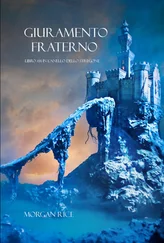This was encouraging information, except that the Navy had inquired about something for sharks. World War II marked the first time in US military history that battles were being fought on and over tropical seas, and stories had begun to circulate of sailors and fliers being attacked and devoured after abandoning ship or ditching their plane. (During the previous world war, crews wound up in the North Atlantic, where cold devoured them first.) One particular narrative made its way to a man named Henry Field (as in the Field Museum of Natural History), who at the time held the title Anthropologist to the President, as well as a post with—well, hello again!—the OSS.
In June 1941, the story went, an Ecuadorian Navy plane went down in the Pacific after running out of fuel. The “desperation and terrification” of the flight officer is detailed in the official report of the incident, which Henry Field either heard about or read. It was a moonlit night. The man wore a life jacket, and as he swam he pushed along the body of a drowned colonel. Sharks began to cross the water in front of him. “At a given moment I felt that they were trying to take away the corpse, pulling it by the feet, on account of which I clutched desperately the body of my companion and together with him we slid until the tension disappeared.” Here I confess I became more interested in the translator of the report than its terrificated protagonist: “Once refloated, with despair I touched his legs and became aware that a part of them was lacking.” The flight officer abandoned the demi-corpse and continued alone to shore, “with various sharks following.”
“Night after night,” Henry Field recalls in his memoir, “I thought of these men… with sharks cutting through the water around them.” As Anthropologist to the President, he had Franklin Delano Roosevelt’s ear, even, it seemed, in matters of ichthyology. “I wrote the president a memorandum suggesting that we try to develop a shark repellent.”
With presidential blessings, Field met with fellow museum curator Harold J. Coolidge, also on the payroll of the OSS. Coolidge was a primatologist—a silverback gorilla he collected (shot) in the Congo resides to this day in Harvard University’s Museum of Comparative Zoology—but he agreed to oversee the shark project. You can well imagine that a gorilla expert on salary with a spy organization might suffer a mild sense of purposelessness. Here at last was something up his alley, if not precisely on his doorstep. Coolidge hired another curator pal, W. Douglas Burden, as the project’s principal investigator. Burden was an expert on Komodo dragons, had written an entire book about Komodo dragons, but he, too, knew little about sharks.
For actual shark expertise, the OSS turned to a college dropout named Stewart Springer, whose résumé included stints as a commercial fisherman and as a chemical technician at the Indianapolis Activated Sludge Plant. In 1942, there were no experts in shark biology and behavior. Truly, no one knew much about the creatures. The combination of hands-on shark experience and sludge chemistry was, in fact, ideal background for the task. “Dr.” Springer, as some of the OSS correspondence refers to him, was as good as it got.
The US Navy agreed to contribute funding, even though, as one of their rank pointed out, there was at that time no formal record of anyone who had taken the oath of the Navy having been harmed by sharks. Their concern was morale. Fear of sharks, however irrational, was thinning the ranks of willing fliers. Stewart Springer voiced the cockamamie irony of it: “It was okay to give one’s life for one’s country, but to get eaten for it was another matter.” If nothing else, a repellent would serve as what Douglas Burden called a “pink pill,” a psychological fix for shark-shy aviators. On July 3, 1942, funding was approved for OSS Office of Scientific Research and Development Project 374, Contract OEMcmr-184: a three-month investigation “looking to the development of means of protection against sharks, barracuda and jellyfish [50] Two months into it, the Chief of the American Intelligence Command wrote to Harold Coolidge urging him to add piranhas to the list. AIC needed better piranha intelligence. Years ago, nature filmmaker Wolfgang Bayer told me the story of the time he was sent to the Amazon to get footage of bloodthirsty piranhas devouring a capybara. Bayer strung nets across the river to trap a school of piranhas. He captured a capybara and herded it into the river. Nothing. He starved the piranhas. Still nothing. He went home.
for men adrift in lifebelts.” (In three hundred some pages of archived correspondence for Project 374, I saw but two passing references to barracudas. As far as I can tell, no one ever got around to jellyfish.)
The lab work was done mainly at Woods Hole Oceanographic Institution, which housed a collection of captive sharks called dogfish—in size and temperament, somewhere between a great white and a goldfish. Rotenone was among the first substances the team tested. “Definitively negative,” Burden reported to Coolidge. “Lethal doses do not deter the feeding process.” The shark would die, but not before you did. Until such time as goldfish presented a threat to national security, rotenone would be limited to the arsenal of the USDA.
Seventy-nine substances were tested and rejected. Irritants failed. “Repulsive odors” failed. As did clove oil, vanillin, pine oil, creosote, nicotine. They tried compounds related to mothballs, asparagus, horse piss. The sharks ignored all of it. The first “hot lead” sprang from an item of sharker lore. Springer had heard that a shark carcass abandoned on a bait line will ruin the spot for shark fishing. He and his team got to work. They rented an “isolated” house in Florida for $10 a month, and never, I’m guessing, was a cleaning deposit more roundly withheld. Chunks of shark muscle tissue were left out at room temperature for four or five days. An extract was then prepared by grinding the decomposed flesh, stirring in alcohol, and filtering the resultant shark muck.
Forty-three experiments later, Springer enthused in a note to Burden, it was possible “to say POSITIVELY that the meat contains some substance strongly repellent to sharks.” Repellence value 88.4 percent! Ninety to 100 percent effective! The bimonthly progress report of Contract OEMcmr-184 describes Springer as “sufficiently convinced of the effectiveness of the concentrate that he would be willing to test it in a life belt with a bucket of blood.”
An expedition to test the decayed meat concentrate on wild sharks had been slated as the next step, but Springer and Burden urged the OSS to begin production immediately. “If we really have something now and… the field test delays use of a good thing by six months,” Springer wrote to Coolidge, “and if during those six months… some poor devils might have been protected it would be bad.” Springer happened to know a contractor who could get right to work producing the concentrate. Shark Industries was a Florida purveyor of shark skins and shark oil—and also, speaking of things that smell fishy, Springer’s sometime employer. The company, Springer felt certain, would be able to produce enough shark extract to outfit 2,000 to 5,000 life jackets per month. If Springer had his way, the whole undertaking would soon be moot, as there would be no sharks left to repel.
The OSS didn’t bite. Rather than move forward with the concentrate, they wanted to try to isolate the active ingredient—a compound that could be ordered or cheaply synthesized, thereby saving them the cost and bother of large-scale shark carcass reduction. Chemists were hired, three of them, and they soon came up with a promising candidate: ammonium acetate. It, along with two compounds that had earlier shown promise (copper sulfate and maleic acid), plus thirty pounds of the Macbethian-sounding “extract of decomposing shark meat,” were flown down to Ecuador, to the very same waters where our story began, to be tested on “voracious surface-feeding sharks.” Lodgings were secured, boats and guides hired. Three weeks later, Burden dispatched a glum cable: “The waters off the coast of Ecuador have been virtually empty.”
Читать дальше












